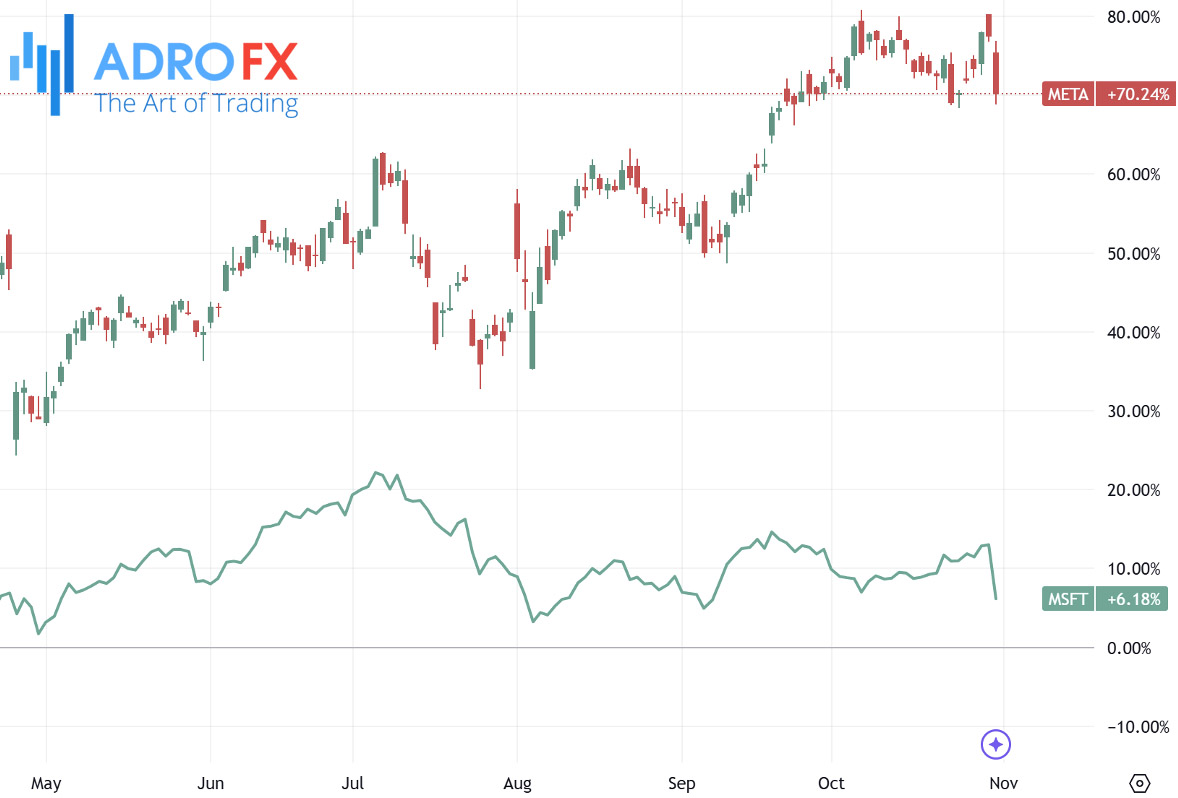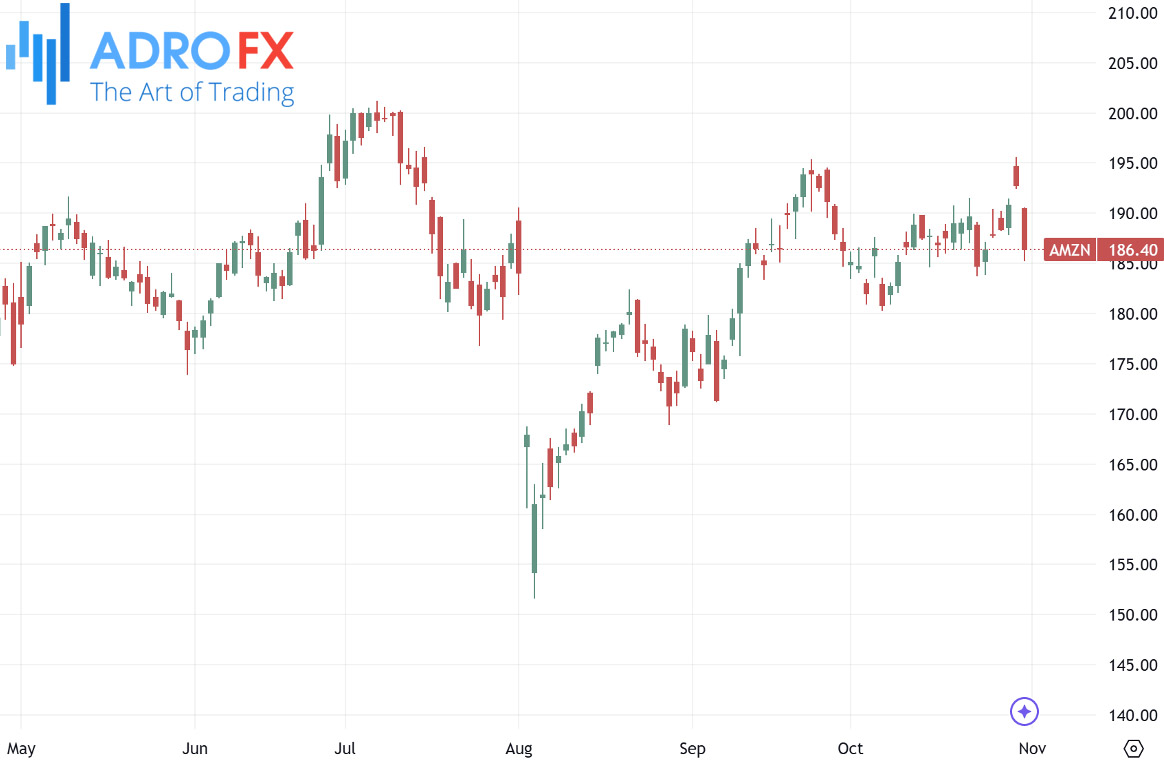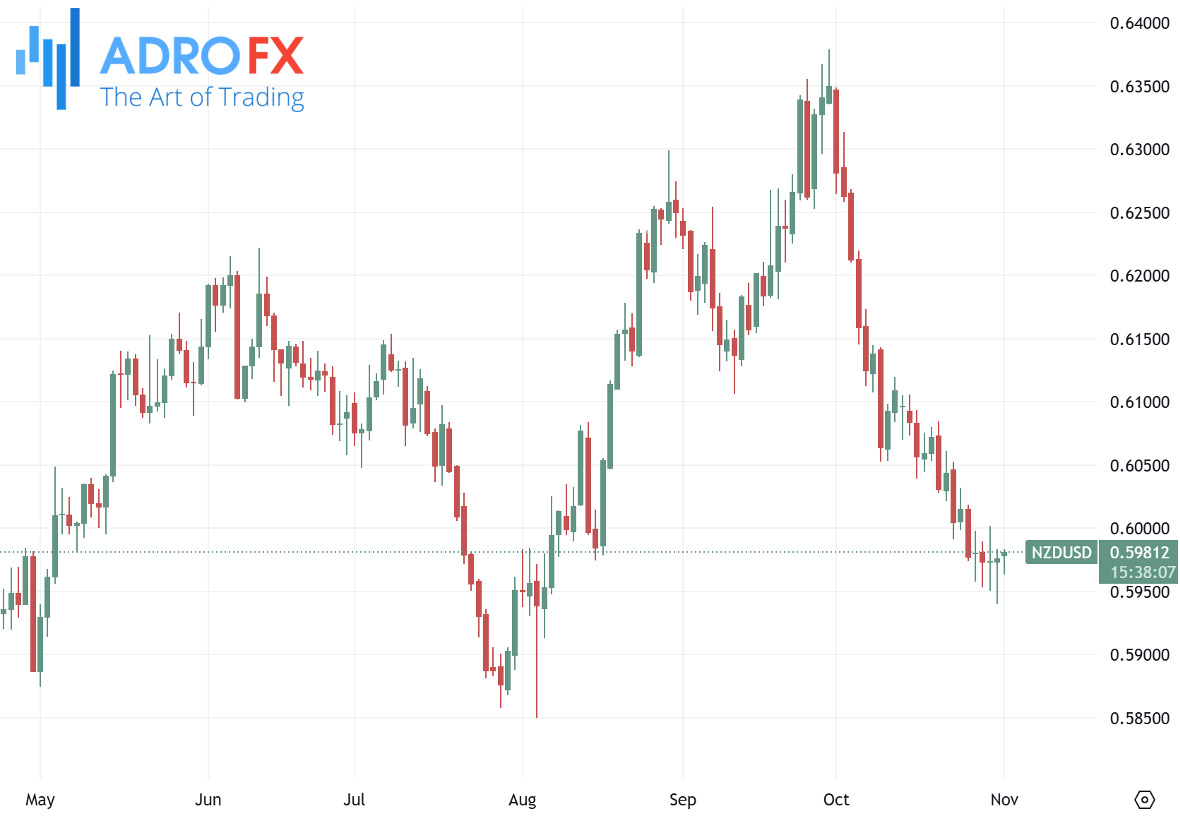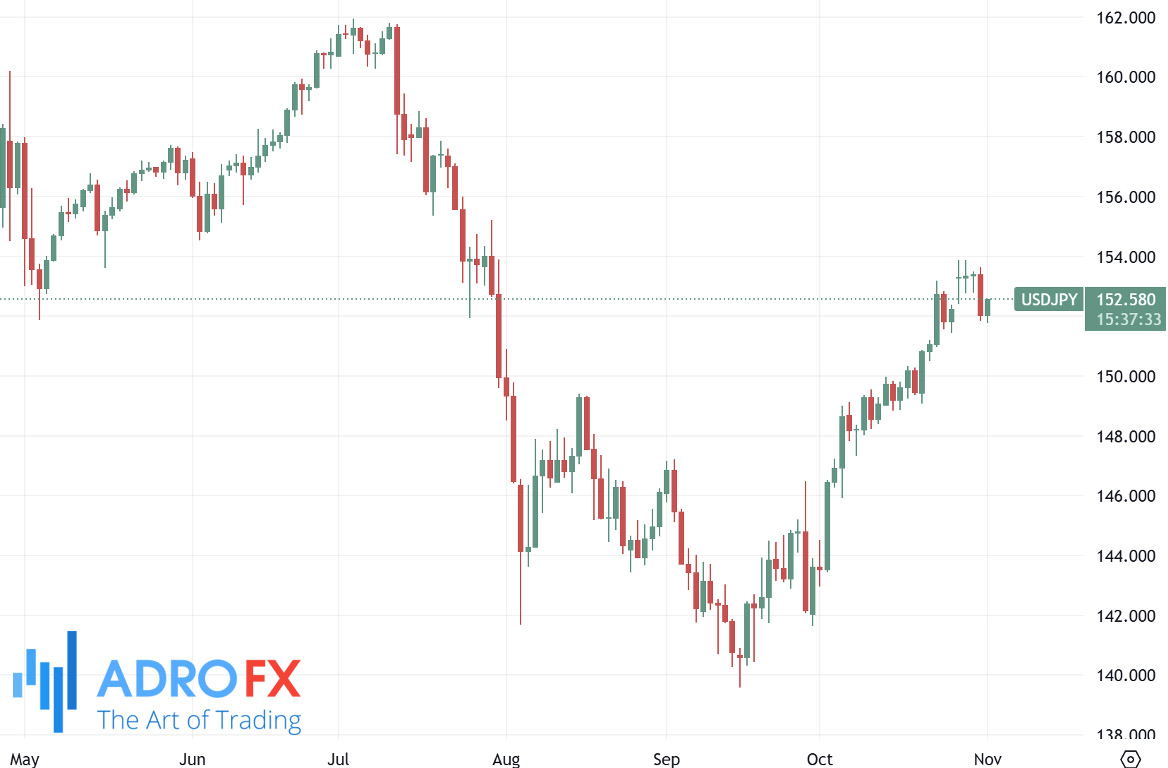S&P 500 Drops Amid Tech Sell-Off and Inflation Woes, Amazon Surprises with Strong Q3 Results | Daily Market Analysis

Key events:
- USA - Average Hourly Earnings (MoM) (Oct)
- USA - Nonfarm Payrolls (Oct)
- USA - Unemployment Rate (Oct)
- USA - S&P Global US Manufacturing PMI (Oct)
- USA - ISM Manufacturing PMI (Oct)
- USA - ISM Manufacturing Prices (Oct)
The US stock market saw a notable decline on Thursday, driven by significant losses in major tech stocks, including Meta and Microsoft. These drops were compounded by fresh inflation data that raised questions about the Federal Reserve's ability to proceed with anticipated rate cuts, prompting concern among investors.
The S&P 500 index fell by 1.9%, while the Dow Jones Industrial Average lost 378 points or 0.9%, and the NASDAQ Composite dropped 2.8%, marking a challenging day for tech and growth stocks.

Meta Platforms Inc. (NASDAQ: META) suffered a 4% loss after reporting that its Q3 user growth lagged expectations. Despite beating earnings and revenue estimates, Meta’s announcement of increased spending spooked investors, overshadowing the company’s performance in the quarter.
Microsoft Corporation (NASDAQ: MSFT) faced similar issues, falling nearly 6% as a result of weaker-than-anticipated guidance. Although Microsoft delivered fiscal Q1 earnings that surpassed expectations, investors reacted to the company’s cautious future outlook. As two giants in the tech sector, Meta and Microsoft’s struggles on Thursday had a cascading effect on other technology stocks, leading to broader declines across the NASDAQ.

In contrast, Amazon.com Inc. (NASDAQ: AMZN) provided a bright spot after hours, as it reported better-than-expected Q3 earnings that lifted its stock by 5.7% in extended trading. Amazon posted adjusted earnings per share of $1.43, exceeding analyst estimates by $0.29, and total revenue for the quarter reached $158.9 billion, marking an 11% year-over-year increase and surpassing the consensus estimate of $157.25 billion.

Amazon’s strong performance was bolstered by its cloud computing arm, Amazon Web Services (AWS), which saw revenue rise by 19% to $27.5 billion. Meanwhile, Amazon’s North American division also showed robust growth, with sales rising 9% to $95.5 billion. Its international segment recorded a 12% increase, reaching $35.9 billion in sales. However, Amazon’s guidance for the fourth quarter was somewhat underwhelming, with expected revenue between $181.5 billion and $188.5 billion, falling slightly short of analyst estimates at the midpoint. The company anticipates operating income for Q4 to range between $16.0 billion and $20.0 billion.
Meanwhile, in the foreign exchange market, the Australian Dollar showed limited movement against the US Dollar following two days of gains, as Australia released mixed Producer Price Index (PPI) data for Q3 on Friday. The PPI rose by 0.9% quarter-over-quarter, beating forecasts of a 0.7% increase but showing a slight decline from the previous quarter’s 1.0% growth. On a year-over-year basis, producer inflation slowed to 3.9% in Q3, down from 4.8% in Q2. This marks the 17th consecutive quarter of rising producer prices, and the RBA's hawkish stance has lent some support to the AUD/USD pair despite external pressures.

China’s economy also delivered a positive surprise, as the Caixin Manufacturing PMI for October climbed to 50.3 from 49.3 in September, exceeding market expectations of 49.7. China remains a key trading partner for Australia, so improvements in China’s manufacturing sector may positively impact Australian exports.
The New Zealand Dollar held steady for a third consecutive session, trading around 0.5980 in Friday’s Asian session. The Kiwi gained support from China’s better-than-expected PMI, as China is New Zealand’s top trading partner. However, the New Zealand Dollar could face pressure due to mounting expectations that the Reserve Bank of New Zealand will take a dovish stance following the recent return of inflation to target levels. Markets are now anticipating a 50-basis point rate cut from the RBNZ in November, with expectations that the cash rate will decline from 4.75% to 3.82% by year’s end.

In Japan, the Japanese Yen retraced some recent gains following the release of the October Manufacturing PMI by Jibun Bank and S&P Global, which showed a decrease to 49.2 from September’s 49.7. The data indicates that Japanese manufacturing output continued to contract at the start of Q4 2024. However, USD/JPY moved lower as the yen gained strength after Bank of Japan Governor Kazuo Ueda hinted at a possible rate hike in December.

Japan's Chief Cabinet Secretary Yoshimasa Hayashi stated on Friday that the Bank of Japan and the government would work together to implement appropriate monetary policies aimed at stable and sustainable price growth.
In the US, the dollar ended its four-day losing streak as concerns lingered ahead of the upcoming presidential election. The US PCE Price Index showed core inflation rising 2.7% year-over-year in September, while initial jobless claims fell to a five-month low, suggesting a strong labor market. Traders are now eyeing the nonfarm payrolls (NFP) report, with forecasts indicating the US added 113,000 jobs in October and the unemployment rate held steady at 4.1%.









